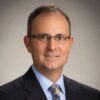In many cases, readmissions involve avoidable costs, as well as reduce patient satisfaction. “If they do not get rehospitalized, patients are happier, their caretakers are happier, and I feel the quality of their care is better,” Dr. Wanski says. “If you can keep the person well at home, make sure they take their medications, hopefully not go back to the ER, and get on with their lives—all those things together are why we’re supporting this collaborative.”
But hospitalists, especially in larger groups, potentially have the leverage to negotiate access to services and the care coordination needed to reduce hospital costs and preventable readmissions, Dr. McKay notes. “In 2012, hospitalists are key, and we need to find a way to make readmission reduction part of their job description, so that they can direct that,” he says.
—Z. Joseph Wanski, MD, FACE, medical director, L.A. Care Health Plan, endocrinologist/hospitalist, California Hospital Medical Center, Los Angeles
At Valley Presbyterian Hospital in Van Nuys, which employs three part-time hospitalists who also maintain busy office practices, “the hospitalists have been very cooperative with our project,” reports Adriana Quintero, MSW, the hospital’s full-time Project BOOST facilitator. “They see a lot of our patients in their offices.” The physicians have agreed to carve out time to see, within seven days, discharge patients going home without scheduled appointments with their primary-care physicians (PCPs).
“We find that many of our discharged patients do not call their primary-care physicians for post-discharge appointments” and decline the hospital team’s offers for help—which makes it important for the discharge coordinator to follow up as soon as possible after the patient goes home, Quintero says.
At the collaborative congress in early June, team member Alice Gunderson reported results for Saint Francis Hospital in Lynwood. Gunderson, who sits on the hospital’s quality and safety board, has been a volunteer patient family advocate (PFA) for the past year and a half; she was inspired by her own experience as a family caregiver for her husband and mother, both of whom were Saint Francis patients. Gunderson challenged those in the audience to bring a PFA from their own hospital to the next BOOST meeting.
“From my point of view, wherever healthcare goes, the patient is becoming more educated, with all of the communication technology that is out there, and claiming that empowerment,” Gunderson says. “We must all work together, not in separate silos, for the best outcomes, and we can all learn from one another.”
Larry Beresford is a freelance writer in Oakland, Calif.
